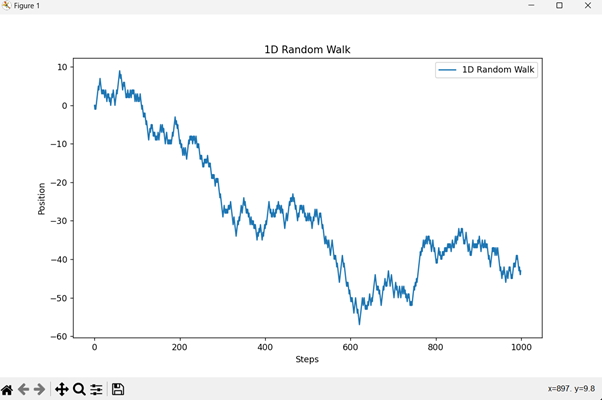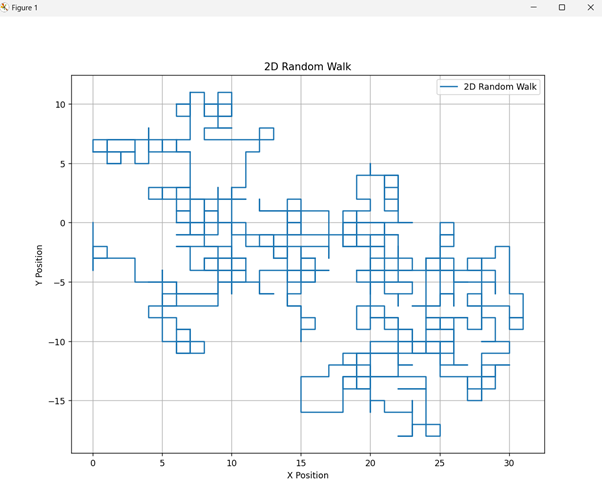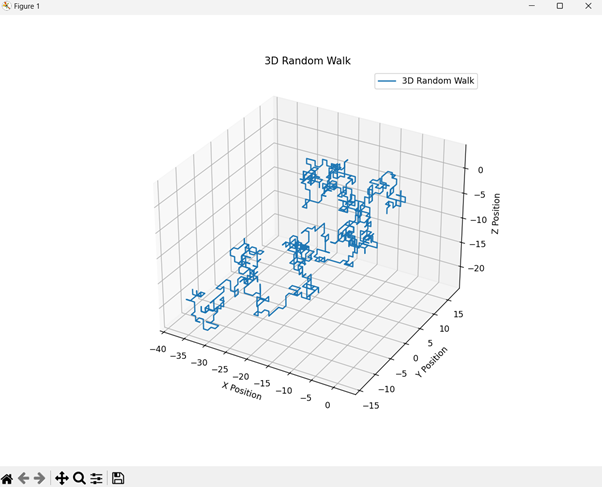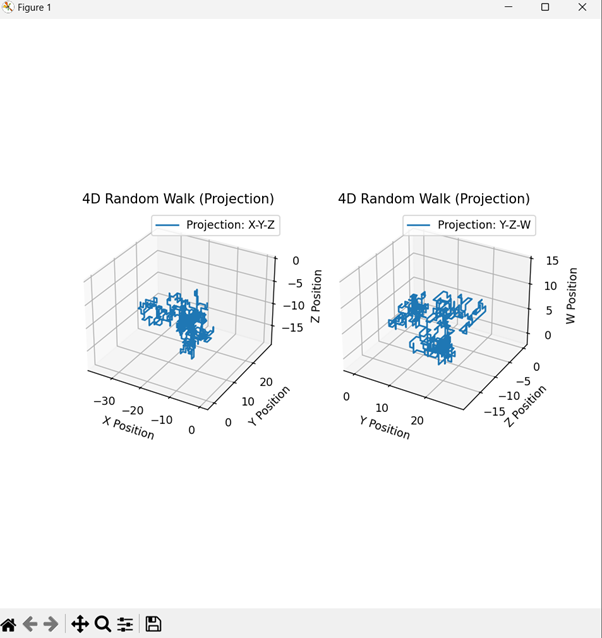
- Python基礎
- Python - 首頁
- Python - 概述
- Python - 歷史
- Python - 特性
- Python vs C++
- Python - Hello World程式
- Python - 應用領域
- Python - 直譯器
- Python - 環境設定
- Python - 虛擬環境
- Python - 基本語法
- Python - 變數
- Python - 資料型別
- Python - 型別轉換
- Python - Unicode系統
- Python - 字面量
- Python - 運算子
- Python - 算術運算子
- Python - 比較運算子
- Python - 賦值運算子
- Python - 邏輯運算子
- Python - 位運算子
- Python - 成員運算子
- Python - 身份運算子
- Python - 運算子優先順序
- Python - 註釋
- Python - 使用者輸入
- Python - 數字
- Python - 布林值
- Python控制語句
- Python - 控制流
- Python - 決策
- Python - if語句
- Python - if else
- Python - 巢狀if
- Python - Match-Case語句
- Python - 迴圈
- Python - for迴圈
- Python - for-else迴圈
- Python - while迴圈
- Python - break語句
- Python - continue語句
- Python - pass語句
- Python - 巢狀迴圈
- Python函式與模組
- Python - 函式
- Python - 預設引數
- Python - 關鍵字引數
- Python - 僅限關鍵字引數
- Python - 位置引數
- Python - 僅限位置引數
- Python - 可變引數
- Python - 變數作用域
- Python - 函式註解
- Python - 模組
- Python - 內建函式
- Python字串
- Python - 字串
- Python - 字串切片
- Python - 修改字串
- Python - 字串連線
- Python - 字串格式化
- Python - 跳脫字元
- Python - 字串方法
- Python - 字串練習
- Python列表
- Python - 列表
- Python - 訪問列表項
- Python - 修改列表項
- Python - 新增列表項
- Python - 刪除列表項
- Python - 遍歷列表
- Python - 列表推導式
- Python - 排序列表
- Python - 複製列表
- Python - 合併列表
- Python - 列表方法
- Python - 列表練習
- Python元組
- Python - 元組
- Python - 訪問元組項
- Python - 更新元組
- Python - 解包元組
- Python - 遍歷元組
- Python - 合併元組
- Python - 元組方法
- Python - 元組練習
- Python集合
- Python - 集合
- Python - 訪問集合項
- Python - 新增集合項
- Python - 刪除集合項
- Python - 遍歷集合
- Python - 合併集合
- Python - 複製集合
- Python - 集合運算子
- Python - 集合方法
- Python - 集合練習
- Python字典
- Python - 字典
- Python - 訪問字典項
- Python - 修改字典項
- Python - 新增字典項
- Python - 刪除字典項
- Python - 字典檢視物件
- Python - 遍歷字典
- Python - 複製字典
- Python - 巢狀字典
- Python - 字典方法
- Python - 字典練習
- Python陣列
- Python - 陣列
- Python - 訪問陣列項
- Python - 新增陣列項
- Python - 刪除陣列項
- Python - 遍歷陣列
- Python - 複製陣列
- Python - 反轉陣列
- Python - 排序陣列
- Python - 合併陣列
- Python - 陣列方法
- Python - 陣列練習
- Python檔案處理
- Python - 檔案處理
- Python - 寫入檔案
- Python - 讀取檔案
- Python - 重新命名和刪除檔案
- Python - 目錄
- Python - 檔案方法
- Python - OS檔案/目錄方法
- Python - OS路徑方法
- 面向物件程式設計
- Python - OOPs概念
- Python - 類與物件
- Python - 類屬性
- Python - 類方法
- Python - 靜態方法
- Python - 建構函式
- Python - 訪問修飾符
- Python - 繼承
- Python - 多型
- Python - 方法重寫
- Python - 方法過載
- Python - 動態繫結
- Python - 動態型別
- Python - 抽象
- Python - 封裝
- Python - 介面
- Python - 包
- Python - 內部類
- Python - 匿名類和物件
- Python - 單例類
- Python - 包裝器類
- Python - 列舉
- Python - 反射
- Python錯誤與異常
- Python - 語法錯誤
- Python - 異常
- Python - try-except塊
- Python - try-finally塊
- Python - 丟擲異常
- Python - 異常鏈
- Python - 巢狀try塊
- Python - 使用者自定義異常
- Python - 日誌記錄
- Python - 斷言
- Python - 內建異常
- Python多執行緒
- Python - 多執行緒
- Python - 執行緒生命週期
- Python - 建立執行緒
- Python - 啟動執行緒
- Python - 合併執行緒
- Python - 執行緒命名
- Python - 執行緒排程
- Python - 執行緒池
- Python - 主執行緒
- Python - 執行緒優先順序
- Python - 守護執行緒
- Python - 執行緒同步
- Python同步
- Python - 執行緒間通訊
- Python - 執行緒死鎖
- Python - 中斷執行緒
- Python網路程式設計
- Python - 網路程式設計
- Python - 套接字程式設計
- Python - URL處理
- Python - 泛型
- Python庫
- NumPy教程
- Pandas教程
- SciPy教程
- Matplotlib教程
- Django教程
- OpenCV教程
- Python雜項
- Python - 日期與時間
- Python - 數學
- Python - 迭代器
- Python - 生成器
- Python - 閉包
- Python - 裝飾器
- Python - 遞迴
- Python - 正則表示式
- Python - PIP
- Python - 資料庫訪問
- Python - 弱引用
- Python - 序列化
- Python - 模板
- Python - 輸出格式化
- Python - 效能測量
- Python - 資料壓縮
- Python - CGI程式設計
- Python - XML處理
- Python - GUI程式設計
- Python - 命令列引數
- Python - 文件字串
- Python - JSON
- Python - 傳送郵件
- Python - 擴充套件
- Python - 工具/實用程式
- Python - GUIs
- Python高階概念
- Python - 抽象基類
- Python - 自定義異常
- Python - 高階函式
- Python - 物件內部
- Python - 記憶體管理
- Python - 元類
- Python - 使用元類的超程式設計
- Python - 模擬和存根
- Python - 猴子補丁
- Python - 訊號處理
- Python - 型別提示
- Python - 自動化教程
- Python - Humanize包
- Python - 上下文管理器
- Python - 協程
- Python - 描述符
- Python - 診斷和修復記憶體洩漏
- Python - 不可變資料結構
- Python實用資源
- Python - 問答
- Python - 線上測驗
- Python - 快速指南
- Python - 參考
- Python - 速查表
- Python - 專案
- Python - 實用資源
- Python - 討論
- Python編譯器
- NumPy編譯器
- Matplotlib編譯器
- SciPy編譯器
Python中的隨機遊走實現
隨機遊走是一個每一步都隨機確定的過程,通常用於模擬不可預測的運動。它用於描述由一系列隨機移動組成的路徑。
簡單的隨機遊走可以是一維的,其中粒子必須向左或向右移動,沒有任何偏向。關於隨機遊走應用於更高維度(如二維、三維和四維)的概念,運動是在特定維度中隨機方向進行的。
每個額外的維度都會增加遊走的難度,並提供更多關於隨機過程和空間搜尋的資訊。這些理論包含了Python程式碼,用於一維、二維、三維和四維隨機遊走,以解釋如何用計算機圖形模擬它們。
所需庫的安裝
1. NumPy
用於Python數值計算的NumPy庫,用於處理陣列和執行數學運算。
語法
pip install numpy
2. Matplotlib
Matplotlib是一個繪相簿,用於在Python中建立靜態、動畫和互動式視覺化。
語法
pip install matplotlib
一維隨機遊走的實現
以下程式碼用於在Python中實現一維隨機遊走:
import numpy as np
import matplotlib.pyplot as plt
def random_walk_1d(steps):
"""Generate a 1D random walk."""
walk = np.zeros(steps)
for i in range(1, steps):
step = np.random.choice([-1, 1])
walk[i] = walk[i - 1] + step
return walk
# Number of steps
steps = 1000
walk = random_walk_1d(steps)
# Plot the random walk
plt.figure(figsize=(10, 6))
plt.plot(walk, label='1D Random Walk')
plt.xlabel('Steps')
plt.ylabel('Position')
plt.title('1D Random Walk')
plt.legend()
plt.show()
輸出

程式碼解釋
- **匯入** - numpy用於數值運算。matplotlib.pyplot用於繪製遊走。**random_walk_1d**
- **函式** - 建立一維隨機遊走。
對於每一步,隨機決定向左移動(-1)還是向右移動(+1)。
累加這些步數以計算每一步的位置。 - **繪圖** - 繪製位置與步數的關係圖,以便視覺化隨機遊走。
二維隨機遊走的實現
以下程式碼用於在Python中實現二維隨機遊走:
import numpy as np
import matplotlib.pyplot as plt
def random_walk_2d(steps):
"""Generate a 2D random walk."""
positions = np.zeros((steps, 2))
for i in range(1, steps):
step = np.random.choice(['up', 'down', 'left', 'right'])
if step == 'up':
positions[i] = positions[i - 1] + [0, 1]
elif step == 'down':
positions[i] = positions[i - 1] + [0, -1]
elif step == 'left':
positions[i] = positions[i - 1] + [-1, 0]
elif step == 'right':
positions[i] = positions[i - 1] + [1, 0]
return positions
# Number of steps
steps = 1000
positions = random_walk_2d(steps)
# Plot the random walk
plt.figure(figsize=(10, 10))
plt.plot(positions[:, 0], positions[:, 1], label='2D Random Walk')
plt.xlabel('X Position')
plt.ylabel('Y Position')
plt.title('2D Random Walk')
plt.legend()
plt.grid(True)
plt.show()
輸出

程式碼解釋
**向四個方向之一移動** - 向上、向下、向左或向右。相應地更新位置並記錄每一步。
三維隨機遊走的實現
以下程式碼用於在Python中實現三維隨機遊走:
import numpy as np
import matplotlib.pyplot as plt
from mpl_toolkits.mplot3d import Axes3D
def random_walk_3d(steps):
"""Generate a 3D random walk."""
positions = np.zeros((steps, 3))
for i in range(1, steps):
step = np.random.choice(['x+', 'x-', 'y+', 'y-', 'z+', 'z-'])
if step == 'x+':
positions[i] = positions[i - 1] + [1, 0, 0]
elif step == 'x-':
positions[i] = positions[i - 1] + [-1, 0, 0]
elif step == 'y+':
positions[i] = positions[i - 1] + [0, 1, 0]
elif step == 'y-':
positions[i] = positions[i - 1] + [0, -1, 0]
elif step == 'z+':
positions[i] = positions[i - 1] + [0, 0, 1]
elif step == 'z-':
positions[i] = positions[i - 1] + [0, 0, -1]
return positions
# Number of steps
steps = 1000
positions = random_walk_3d(steps)
# Plot the random walk
fig = plt.figure(figsize=(10, 10))
ax = fig.add_subplot(111, projection='3d')
ax.plot(positions[:, 0], positions[:, 1], positions[:, 2], label='3D Random Walk')
ax.set_xlabel('X Position')
ax.set_ylabel('Y Position')
ax.set_zlabel('Z Position')
ax.set_title('3D Random Walk')
ax.legend()
plt.show()
輸出

程式碼解釋
- **向六個方向之一移動** - x+、x-、y+、y-、z+或z-。更新三維空間中的位置。
- **繪圖** - 使用matplotlib繪製二維隨機遊走。使用mpl_toolkits.mplot3d進行三維視覺化繪製三維隨機遊走。
四維隨機遊走的實現
以下程式碼用於在Python中實現四維隨機遊走:
import numpy as np
import matplotlib.pyplot as plt
from mpl_toolkits.mplot3d import Axes3D
def random_walk_4d(steps):
"""Generate a 4D random walk."""
positions = np.zeros((steps, 4))
for i in range(1, steps):
direction = np.random.choice(['x+', 'x-', 'y+', 'y-', 'z+', 'z-', 'w+', 'w-'])
if direction == 'x+':
positions[i] = positions[i - 1] + [1, 0, 0, 0]
elif direction == 'x-':
positions[i] = positions[i - 1] + [-1, 0, 0, 0]
elif direction == 'y+':
positions[i] = positions[i - 1] + [0, 1, 0, 0]
elif direction == 'y-':
positions[i] = positions[i - 1] + [0, -1, 0, 0]
elif direction == 'z+':
positions[i] = positions[i - 1] + [0, 0, 1, 0]
elif direction == 'z-':
positions[i] = positions[i - 1] + [0, 0, -1, 0]
elif direction == 'w+':
positions[i] = positions[i - 1] + [0, 0, 0, 1]
elif direction == 'w-':
positions[i] = positions[i - 1] + [0, 0, 0, -1]
return positions
# Number of steps
steps = 1000
positions = random_walk_4d(steps)
# Plot a 4D random walk by projecting onto 3D
fig = plt.figure(figsize=(10, 10))
# 3D projection using first three dimensions
ax1 = fig.add_subplot(121, projection='3d')
ax1.plot(positions[:, 0], positions[:, 1], positions[:, 2], label='Projection: X-Y-Z')
ax1.set_xlabel('X Position')
ax1.set_ylabel('Y Position')
ax1.set_zlabel('Z Position')
ax1.set_title('4D Random Walk (Projection)')
ax1.legend()
# Another 3D projection using last three dimensions
ax2 = fig.add_subplot(122, projection='3d')
ax2.plot(positions[:, 1], positions[:, 2], positions[:, 3], label='Projection: Y-Z-W')
ax2.set_xlabel('Y Position')
ax2.set_ylabel('Z Position')
ax2.set_zlabel('W Position')
ax2.set_title('4D Random Walk (Projection)')
ax2.legend()
plt.show()
輸出

程式碼解釋
- **random_walk_4d函式** - 向八個方向之一移動:x+、x-、y+、y-、z+、z-、w+、w-。更新四維空間中的位置。
- **繪圖** - 由於四維資料太複雜而無法直接視覺化,我們將其對映到三維空間,以便我們可以很好地視覺化。第一個子圖投影到X-Y-Z空間。第二個子圖投影到Y-Z-W空間。
- **視覺化** - 在這些三維投影中,遊走的演變是清晰的——你可以從這裡瞭解四維遊走的行為。
python_projects_from_basic_to_advanced.htm
廣告